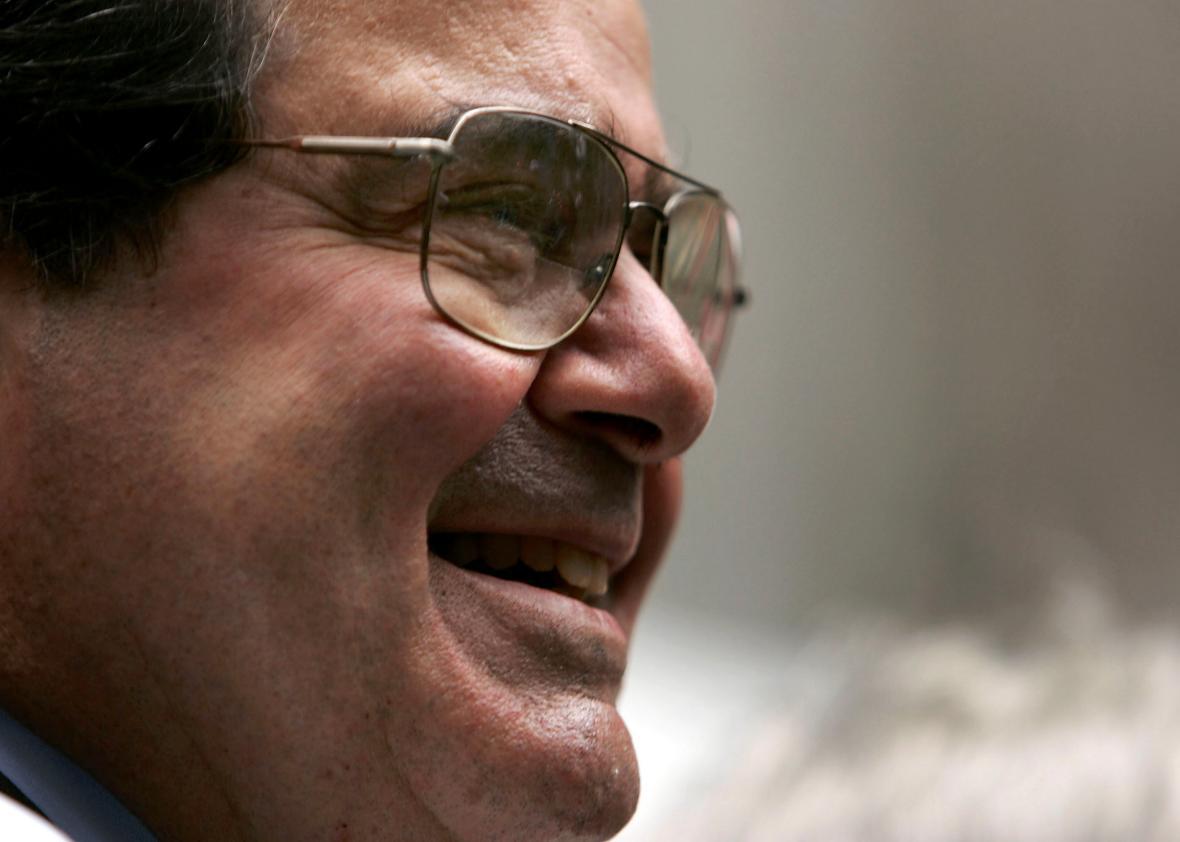Friends:
When this Breakfast Table was launched last week, I expected that we would be talking an awful lot about Justice Antonin Scalia and his death’s influence on the court and the term. It’s been striking, in retrospect, how little he has come up and how much the discussion of Anthony Kennedy’s intellectual chills and spills resembles similar conversations in previous years. And yet it seems to me that the absence of Scalia has shaped the second half of the term almost as much, if not more, than his presence shaped the start of it. I think it was Byron White who was meant to have said that adding a single new justice to the high court always created a whole new court, and this year we are learning that subtracting a single justice might have the same effect. It’s not just one less vote.
There is ample speculation out there that Scalia’s absence has moved Samuel Alito to the vocal right wing of the court, and, as Mark notes, it has perhaps even moved Clarence Thomas to speak at oral argument. One frequently reads that Scalia’s absence has forced the chief justice to forge new consensus and that Kennedy surely seems newly free to be you and me, with the man who so often belittled him gone. Justice Sonia Sotomayor has found a clarion voice on race and the rights of criminal defendants, Justices Elena Kagan and Stephen Breyer seem to have figured out ways to work the levers and broker improbable deals, and Justice Ruth Ginsburg continues to prove that nothing happens at the court that she hadn’t anticipated for years. We’ve talked a lot about the 4–4 court, but in some ways we are seeing a court that is reconfiguring itself around the loss of a dominant force in a very small world. There is a good deal of retrenchment on the court’s right, some feints back to the center, and the left seems to be testing some boundaries. In a way all of these conversations about the court’s shift to the left this term make me realize that if you spend your whole intellectual life scrapping with just eight other people, they become just a bit too important in shaping how you think and act.
It seems clear the court is experiencing the same searing anxiety the rest of the political system is seeing—anxiety about race, and sex, and religion, and guns, and immigration, and money, and making America great again—and the justices are playing out the same big themes we are dealing with in the presidential race, only using their big-kid voices (in the main) and more footnotes. The real betrayal of the court’s right wing may lie in the mere fact that Justice Kennedy seems to have become more aware that racism is a real thing and that you can’t lie about women’s health. It doesn’t make him liberal. It makes him open—in the ways Akhil admires. Justice Kennedy doesn’t seem angry about any of this, by the way. If anything he seems more unruffled now than ever. I find it strangely soothing, amid all the shouting. Maybe the only thing cooler than being the swing justice on a nine-member court is being the swing justice of an eight-member court. It’s a nice metaphor for the end of term. Furious dissents from the right, hopeful surges from the left, and Kennedy at the center, poker-faced, playing the role of a justice.
I want to thank each of you for your insights, your time, and for your willingness to write on deadline all week. Even with the occasional plate smashing, this was good fun.
